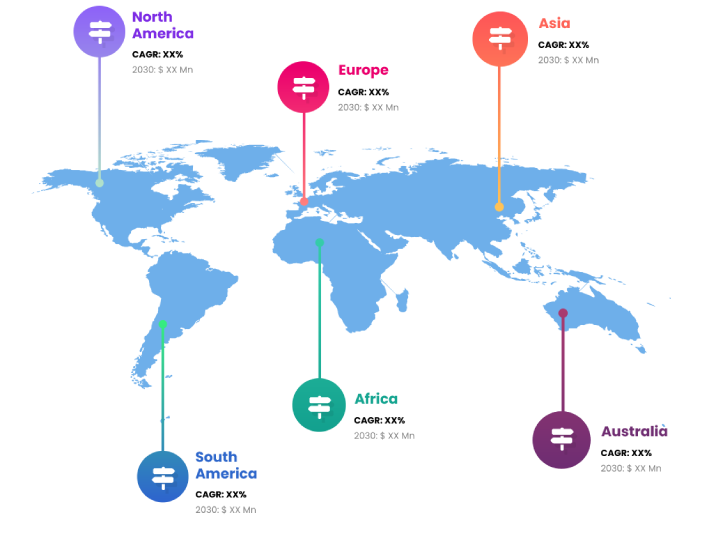
In comparison to their inorganic equivalents, organic semiconductors are more desirable due to their biodegradability and superior performance. One medical application of organic semiconductors is the treatment of skin cancer. Lighting, displays, and smart fabrics are just a few of the many uses for organic semiconductors, which are driving their increasing demand. Detecting and reacting to a number of environmental variables, including thermal and mechanical ones, and sharing data with other devices are some of the many uses for smart textiles in fields as diverse as healthcare, entertainment, the military, and security.
An expanding number of organic photovoltaic (OPV), organic light-emitting diode (LED) lighting, printed battery, organic radio frequency identification (RFID) tag, and display applications are driving the growth of the organic semiconductor market. Organic semiconductors are predicted to keep rising as more and more electronic components like solar cells, light-emitting diodes, and transistors are manufactured. The sector is anticipated to have substantial growth in the near future due to the rising demand for organic semiconductors and nano materials.
The biodegradability of organic semiconductors makes them a better performance option than inorganic ones. Changing the structural configuration of organic semiconductors—the shape or installation of functional groups—is a simple way to make them more conducting, photoluminescent, and improve their performance. This allows for more efficient designs of new-generation electronic devices, which opens up new possibilities and uses that aren't possible with the semiconductor materials used today. Many different products rely on organic semiconductors. Some examples are printed batteries, solar cells, organic light-emitting diodes (OLED) screens, and organic radio frequency identification devices (RFID).
Products such as tablets, PCs, and televisions all make use of organic light-emitting diode screens. Many things make use of organic semiconductors, but lights and screens are among the most common. New technologies, including lab on a chip and portable small displays, are making heavy use of them. The medical field makes use of organic semiconductors in the fight against skin cancer. There is a significant demand for organic semiconductors due to their wide range of potential uses in smart fabrics, lighting, and displays. Use of smart textiles is on the rise in fields including healthcare, entertainment, and military and security. These textiles can sense and respond to thermal and mechanical environmental variables, among others, and even communicate this data with other devices. The use of smart fabrics is on the rise.
The electronics sector has temporarily paused sourcing and production due to the global COVID-19 issue. There will likely be an effect on the organic semiconductors market over the predicted time period from the shift in customer preference toward essential items. The global Organic Semiconductor Market and related goods have seen a precipitous decline as a consequence of the COVID-19 pandemic's impact on international trade restrictions. Worldwide, many government bodies have put travel restrictions into effect. The electronics industry's predicted drop in sales of organic semiconductors is likely to have a negative effect on the market as a whole. During the forecast period, the organic semiconductors market is expected to be constrained by additional factors such as travel bans and restrictions on public gatherings in some countries. In the next months, demand for commodities like organic semiconductors is predicted to be affected by the growing focus on personal care and independent channels. Not only has the outbreak caused human casualties, but it has also raised the prospect of a global economic slump.
During the assessment period, the Organic Semiconductor Market is anticipated to have faster growth due to the rising popularity of OLED displays. Research and development (R&D) budget cuts and a general lack of expertise are likely to slow the advancement of the present system, which in turn will slow down the expansion of the market. However, over the assessment period, the market would grow thanks to projected technology developments, which would also bring the required expertise and reduce the overall cost of organic semiconductors. A major obstacle to the market's expansion in the next years could be the product's potentially shorter lifespan due to environmental factors.
Organic light-emitting diode (OLED) lights, organic photovoltaics, and system components are only a few examples of the many uses for organic semiconductors. The anticipated period sees a significant rise in the production of organic photovoltaic cells and organic light-emitting diode displays. The use of organic semiconductors is common in industrial settings. Research into and use of eco-friendly technologies have skyrocketed in the last several years. Renewable energy sources, like organic batteries, and biodegradable materials, like organic light-emitting diodes (OLEDs), are contributing to the rise in popularity of organic electronics.
Report Coverage
Global Organic Semiconductor research report categorizes the market for global based on various segments and regions, forecasts revenue growth, and analyzes trends in each submarket. Global Organic Semiconductor report analyses the key growth drivers, opportunities, and challenges influencing the global market. Recent market developments and Organic Semiconductor competitive strategies such as expansion, product launch and development, partnership, merger, and acquisition have been included to draw the competitive landscape in the market. The report strategically identifies and profiles the key Organic Semiconductor market players and analyses their core competencies in each global market sub-segments.
| REPORT ATTRIBUTES | DETAILS |
|---|---|
| Study Period | 2017-2031 |
| Base Year | 2024 |
| Forecast Period | 2024-2031 |
| Historical Period | 2017-2021 |
| Unit | Value (USD Billion) |
| Key Companies Profiled | BASF SE (Germany), Bayer AG (Germany), Koninklijke Philips N.V. (Netherlands), Merck & Co. (US), Novaled GmbH (Germany), Samsung (South Korea), Sony Corporation (Japan), LG (South Korea), Universal Display Corporation (US), Sumitomo Corporation (Japan) |
| Segments Covered | • By Product |
| Customization Scope | Free report customization (equivalent to up to 3 analyst working days) with purchase. Addition or alteration to country, regional & segment scope |
Key Points Covered in the Report
- Market Revenue of Organic Semiconductor Market from 2021 to 2031.
- Market Forecast for Organic Semiconductor Market from 2021 to 2031.
- Regional Market Share and Revenue from 2021 to 2031.
- Country Market share within region from 2021 to 2031.
- Key Type and Application Revenue and forecast.
- Company Market Share Analysis, Organic Semiconductor competitive scenario, ranking, and detailed company
profiles. - Market driver, restraints, and detailed COVID-19 impact on Organic Semiconductor
Market
Competitive Environment:
The research provides an accurate study of the major organisations and companies operating in the global Organic Semiconductor market, along with a comparative evaluation based on their product portfolios, corporate summaries, geographic reach, business plans, Organic Semiconductor market shares in specific segments, and SWOT analyses. A detailed analysis of the firms' recent news and developments, such as product development, inventions, joint ventures, partnerships, mergers and acquisitions, strategic alliances, and other activities, is also included in the study. This makes it possible to assess the level of market competition as a whole.
List of Major Market Participants
BASF SE (Germany), Bayer AG (Germany), Koninklijke Philips N.V. (Netherlands), Merck & Co. (US), Novaled GmbH (Germany), Samsung (South Korea), Sony Corporation (Japan), LG (South Korea), Universal Display Corporation (US), Sumitomo Corporation (Japan)
Primary Target Market
- Market Players of Organic Semiconductor
- Investors
- End-users
- Government Authorities
- Consulting And Research Firm
- Venture capitalists
- Third-party knowledge providers
- Value-Added Resellers (VARs)
Market Segment:
This study forecasts global, regional, and country revenue from 2019 to 2031. INFINITIVE DATA EXPERT has segmented the global Organic Semiconductor market based on the below-mentioned segments:
Global Organic Semiconductor Market, By Type
Polyethylene
Poly Aromatic Ring and Copolymer
Global Organic Semiconductor market, By Application
System Component
Organic Photovoltaic (OPV)
OLED Lighting
Printed Batteries
Organic RFID Tags and Display Applications
Global Organic Semiconductor market, Regional Analysis
- Europe: Germany, Uk, France, Italy, Spain, Russia, Rest of Europe
- The Asia Pacific: China,Japan,India,South Korea,Australia,Rest of Asia Pacific
- South America: Brazil, Argentina, Rest of South America
- Middle East & Africa: UAE, Saudi Arabia, Qatar, South Africa, Rest of Middle East & Africa
You will get in-depth and extensive organic semiconductor market market research and competitor analysis for your business to help you develop more profound insights into the organic semiconductor market Market.
Through INFINITIVE Data Expert is a professional Market Research services, I will identify the organic semiconductor market market size, demand & opportunities, growth rate, and target audience with a comprehensive analysis of your competitors.



